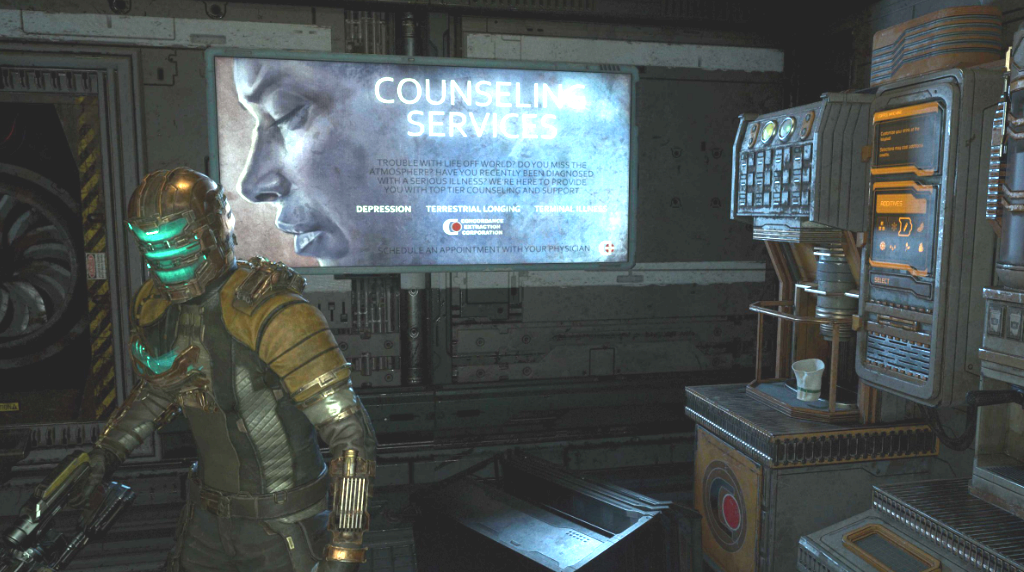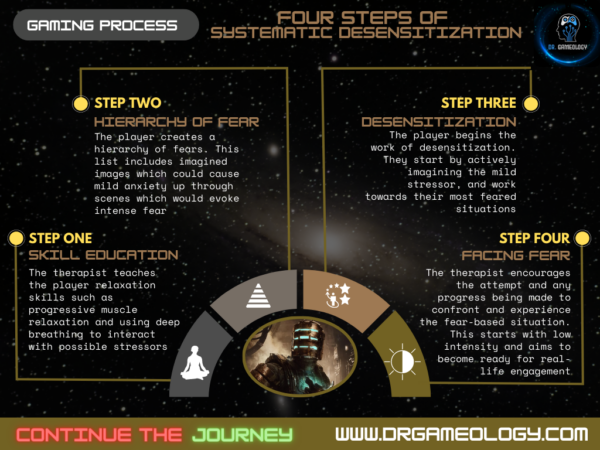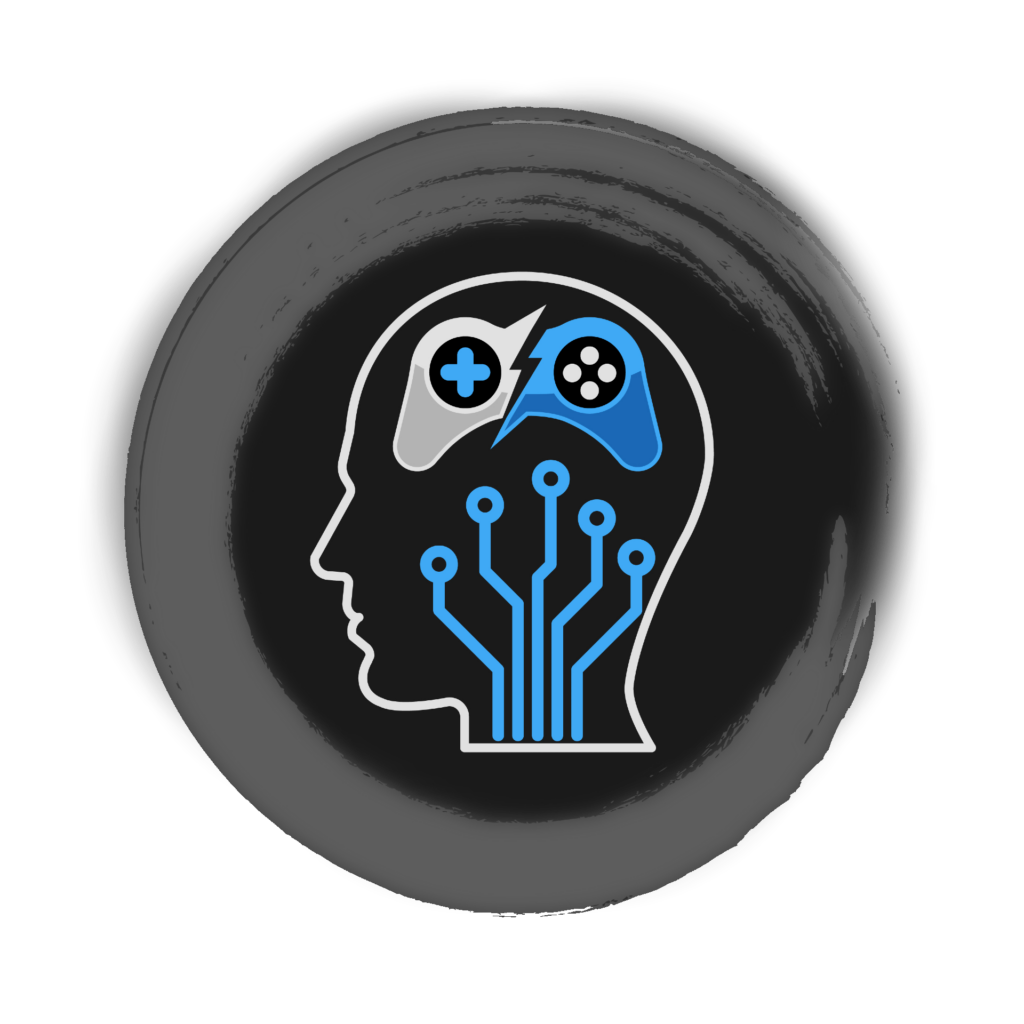How Dead Space Can Desensitize Players To Horror & Lower Their Fear Response
The sci-fi survival horror video game, Dead Space, has become a cult classic in the gaming community. With the PS5 Dead Space remake being released in early 2023, many game players are either revisiting the completely rebuilt USG Ishimura, or choosing to visit this immersive experience for the first time. Despite its horrific setting and gory scenes, the game manages to deliver a fun experience that is highly praised by many players. However, there is also evidence to suggest that this game can actually desensitize players to violence and diminish fear responses.
The True Horror of Dead Space
The play in Dead Space takes place on a desolate spaceship named the USG Ishimura. Players step into the role of Isaac Clarke and face off against terrifying alien creatures known as Necromorphs using only his engineering tools to solve the mystery aboard the fated vessel. Something has gone horribly wrong, and Isaac Clarke faces these challenging events aboard the ship as an everyman engineer as his hero archetype. The ill-fated crew is missing, and there seem to be incredibly few survivors. Throughout the gaming journey, players must control engineer Isaac Clarke battle these hostile creatures while exploring dark and creepy environments filled with blood-curdling noises, eerie atmospheric sounds, jump scares, and suspenseful moments. All of these elements combine to create an intense atmosphere of true horror.
The environments in Dead Space are intense and truly horrifying. They also mix up their methods of terror to make sure the player stays on the edge of their seat as often as possible. The areas Isaac must traverse are dark and dreary, filled with eerie shadows and strange noises that echo across the nightmare aboard the ship’s empty corridors. Lights are constantly being turned off to allow other features of the ship to function marginally. These game features form a key dynamic to make sure the player never truly feels safe.

As players make their way deeper into the Ishimura, they come across Necromorphs lurking in the shadows, waiting to pounce. The human element is tested as well, realizing that these monsters are monstrous perversions of the ship’s crew coming into contact with the religious aritifact called the Marker. With each encounter, Isaac Clarke is forced to battle the creatures using a variety of weapons and tools. The combat scenes are gory and intense, filled with blood and dismemberment as the player makes their way through hordes of Necromorphs and other dangerous transformations. Every new room Isaac Clarke must explore is a new test, and the threat of death makes each quick decision important throughout the twelve chapter campaign.
The Desensitization Effect in Dead Space
Studies have shown that the play of an immersive experience like Dead Space in the survival horror genre can reduce players’ fear responses in various situations as well as increase their acceptance of violent behaviors in real life. This phenomenon is known as desensitization and it occurs when people are exposed to something they initially find upsetting or fearful. With repeated exposure to the same stimulus (in this case the graphic violence in Dead Space), people become less affected by it over time due to a decrease in fear response.

Despite its disturbing content, Dead Space is a highly rated game and its success may have something to do with this desensitization effect. By playing the game, players are able to become more accustomed to the pairing of darkness and threatening situations, making it easier for them to cope with similar ideas in real life context whenever necessary. This is not the same as being in life-threatening situations, as the impetus of the game is still largely psychological to emotional in impact. Still, if a person were to experience simulated fear situations such as Halloween Horror Nights or an Alien movie in a dark movie theater, experience with a game like Dead Space could be expected to have certain impacts on the confidence of the viewer to manage the distress of the events they come into contact with.
Player Progress on the USG Ishimura
The stages of the game are designed to slowly inform the player as to what exactly happened aboard the vast mining ship known as the USG Ishimura. Isaac comes across each new area to fix some malfunction in the ship. What starts off as a routine repair mission becomes anything but that. To keep the player engaged in the mission, the dark secrets of the ship often lead to arsenal improvements through an intuitive upgrade system through the use of nodes to increase power of Isaac’s Resource Integration Gear (called a RIG). The choice of what to spend nodes on is a means to personalize content, meaning each person to play as the engineer Isaac Clarke is creating their own unique build with the resources they discover along the way. Isaac is always adding new weapons to his list of artillery to serve him in new threatening situations.
Click Here to listen & download to our discussion of Dead Space Remake on The Gaming Persona Podcast!
Dead Space also features many instances of genre defining strategic gameplay. One of the key features which sets aside Dead Space from other games, making it a sci-fi survival horror classic, is the method of defeating enemies. While countless zombie survival franchises have taught players to aim for the head, Dead Space challenges players to detach the enemy at their limbs. Enemies can only be stopped by separating an effective number of arms and legs from the core of their bodies. This means players must resort to more creatively defeat enemies to continue roaming the hallways of the Ishimura until they can upgrade Isaac’s engineering tools enough to salvage each area of the ship.
Real World Applications for Dead Space in Treatment
Desensitization does not only apply to video games; it can be seen in other entertainment mediums such as movies, television shows, and even news broadcasts. While it can be argued both for and against this phenomenon, one thing is certain: desensitizing oneself has proven to have numerous benefits in real life scenarios such as emergency medicine training or military combat preparation. This approach can also be utilized in mindful ways throughout treatment of anxiety disorders and trauma responses, although these experiences should be planned out and supervised by a trained treatment professional. Playing Dead Space unilaterally outside of treatment could cause more harm than good.
En vivo desensitization is a therapeutic tool that is becoming increasingly popular in mental health treatment. This technique involves exposing a patient to a fear-inducing situation, such as being in a dark room with jump scares, in order to help them become desensitized to it over time. The goal of this type of therapy is for patients to be able to cope better with fear-provoking situations in the future, as their initial fear response to similar scenarios will have decreased. By starting with simple prompts, a person begins the building of their tolerance to the distress. Over time, the prompting becomes larger, eventually approximating the stress which was targeted by the intervention from the beginning.
The use of desensitization through survival games like Dead Space for benefits such as emotional regulation or stress management in the non-virtual world is a testament to the power of gaming and their potential benefits when applied thoughtfully. By using games like Dead Space, people can become better equipped to face their fears head-on and learn how to cope with difficult situations more effectively. As such, it’s no surprise that Dead Space is one of the video game industry’s most successful titles. The game’s impact, both commercial and psychological, is undeniable.
Systematic desensitization is a type of cognitive-behavioral therapy that seeks to help individuals become less anxious or fearful when exposed to a given stimulus. It is based on the principle that an individual will be able to reduce their fear by gradually being exposed to the feared object, activity, or situation in a safe and controlled environment

This process would begin by receiving psychoeducation on relaxation techniques, deep breathing, muscle relaxation, and other methods of reducing internal tension during exposure to stressful situations.
With these skills being developed, the person will list their fears to construct a hierarchy ranging from imagined scenes of mild distress to events which would evoke a significant fear response. Dead Space definitely presents imagery which many people would agree fit into every category of this hierarchy, so playing it can become a distressing experience while a person is adjusting to the frighteningly detailed rooms and tense moments.
The next step is when desensitization begins. The person relaxes themselves, and aims to create a vivid / fear-inducing scene with their imagination. This is done as an escalating process, meaning you start with only mildly distressing scenes, and work towards intense images as the person becomes ready. Dead Space does make effort to scaffold the intensity of scenes a player experiences up to a point. However, the goal of the game is to maintain constant tension until the climactic points challenge the player. The player viewing the game is never in control using their imagination, (unless their powers of mind are making the game worse due to overlapping trauma or personal connection to enhancing the fear response).
If this game was discussed in a therapeutic setting, like the many counseling posters in the game recommend, the therapist would encourage the player to continue facing their fears to notice where their strengths are able to get them through. Unlike Isaac, who is equipped with only his engineering tools, the player does not die with each failed attempt to fix the ship. They can respawn and try again. After losing a few times each way, especially viewed with jaw dropping visual fidelity to ramp up the intensity of the gory details, a player will become used to the shocking depictions of these visceral games, and eventually look on them with more of a strategic lens to unlock the fun inside of them.
Conclusion
Dead Space is an incredibly intense and immersive gaming experience that nails the horror genre. Its hauntingly grim visuals, terrifying audio design, and desensitization effects make for a dangerous combination that
Dead Space is also an excellent example of how video games can desensitize players to violence while still providing a thrilling horror experience unlike any other genre out there. By placing gamers into intense scenarios with extreme levels of brutality, this beloved series has pushed boundaries while helping prepare individuals for some of life’s toughest challenges.

If you or someone you know are looking for Telehealth Counseling or Coaching Services across the US, you can contact Kindbridge Behavioral Health to work with our network of clinicians specializing in Gaming Issues to get you back on track!
Important Links
- @DrGameology – Twitch
- Apple Podcasts – The Gaming Persona
- Spotify – The Gaming Persona
- Google – The Gaming Persona
- LinkedIn – Connect with Me
- Blogs – Dr. Gameology






